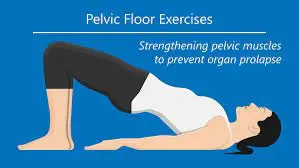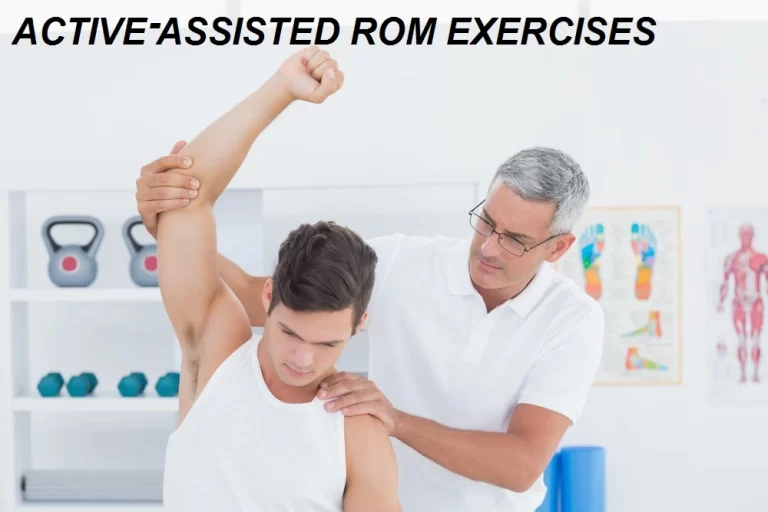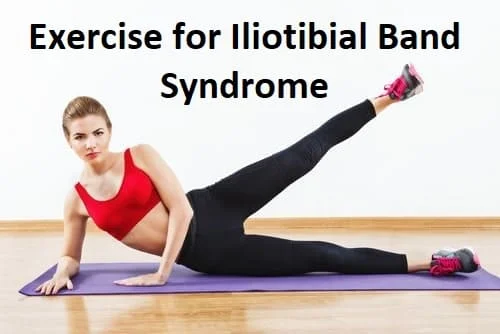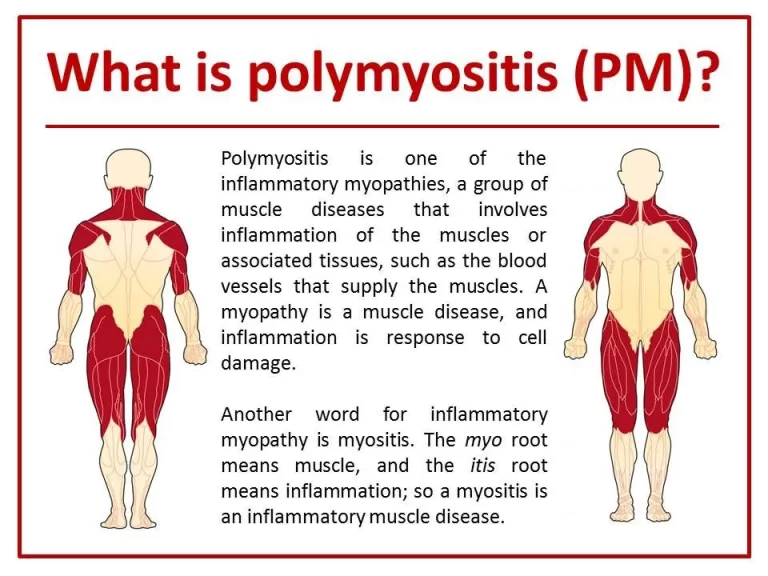11 Best Exercises for High Cholesterol
The waxy chemical known as cholesterol is present in your blood’s fat cells.
Your blood arteries produce fatty deposits when your cholesterol level is high. Blood cannot move as easily via your veins to your arteries because of these deposits. High cholesterol increases your risk of having a heart attack and may result in a stroke.
High cholesterol occurs due to Diabetes, A poor diet, Smoking, Lack of Exercise, Overweight.
Regular exercise is an essential component of a healthy lifestyle and plays a significant role in managing high cholesterol levels.
High cholesterol is a condition that occurs when there is an excessive amount of cholesterol in the bloodstream. It is a major risk factor for heart disease and can lead to various cardiovascular complications if not properly managed.
Your doctor may have mentioned exercise to you when you first received the news that your cholesterol was elevated. One of the most effective lifestyle adjustments you can do to naturally lower your numbers is exercising, in addition to making dietary improvements.
You may have begun by saying, “I detest running.” Or perhaps you enjoy running but are currently unable to do so due to an injury. Or perhaps you enjoy jogging but dislike walking on a treadmill.
There are other options besides running to improve your health. There is no denying its effectiveness as an aerobic activity, but there are a number of other worthwhile options that might help mitigate the harmful effects that high cholesterol has on your health.
In this response, we will discuss some of the best exercises for high cholesterol.
Table of Contents
Why doing exercises can lower cholesterol?
One of the fatty materials that circulates in our blood is called cholesterol. If we have too much of it, it can adhere to the inside walls of our arteries, narrowing them and raising our risk of cardiovascular disease.
However, our risk isn’t just affected by the blood’s level of cholesterol. There are further variables. A particular type of protein that carries cholesterol through the body is one of these. Problems are more likely to arise when low-density lipoprotein (LDL) cholesterol is found. The body protects itself against cholesterol buildup by high-density lipoprotein (HDL) cholesterol.
Even the nature of our cholesterol may change as a result of exercise. Exercise increased the number and size of the particles moving cholesterol through the body. Greater levels of physical activity resulted in larger, “fluffier” particles that were less prone to clog arteries.
Although you’re carrying excess weight, exercise can still help you lower your cholesterol levels.
How does physical activity lower cholesterol levels?
Exercise helps to lower the harmful, unhealthy LDL cholesterol by increasing HDL cholesterol. Additionally, losing weight raises HDL.
being overweight and not exercising regularly are just two lifestyle factors that contribute to elevated cholesterol.
So it seems to reason that exercising would be the obvious choice for lowering cholesterol levels.
Best exercises for Lowering Cholesterol
According to some research, “how much” exercise you get may be more significant than the type of exercise you undertake. Therefore, it makes sense to increase your daily activity in whatever way you can. Walk around during your lunch break, take the stairs instead of the lift, answer the phone while standing up, or keep a jump rope by your desk.
Additionally, make an effort to include at least 30 minutes of organized activity each day. While any form of exercise is preferable to none, research has shown that the following exercises are particularly beneficial in lowering cholesterol.
The following are some of the top exercises for lowering cholesterol naturally:
- Walking
- Jogging/running
- Cycling
- Swimming
- Dancing
- Tai chi
- Weightlifting
- Stair climbing
- Yoga
Jogging/running

Jogging is an excellent workout for decreasing cholesterol and controlling weight if your joints are in good condition and you love it. But don’t assume you have to compete. A few kilometers of easy jogging may decrease cholesterol more effectively than a quick lap of the block.
Long-distance runners dramatically improved HDL cholesterol levels more than short-distance runners (less than 10 miles per week) and blood pressure also improved significantly.
Running is an aerobic workout, just like walking. Running raises your heart rate, which lowers cholesterol. You need to increase your heart rate throughout exercise, whether it be running or another type. You want your heart to beat more quickly, not thump, says Levine. Additionally, you should breathe more quickly. You want it a little deeper and faster, but not so quickly that you start hyperventilating, Levine states. If you can’t converse with someone while exercising, you’re working too hard.
Take a brisk Walk
It has long been disputed whether walking is better for cardiovascular health than jogging. Walking can frequently be a much superior kind of exercise in terms of preserving joint health, especially as we age.
People who exercised with the same amount of effort, whether by walking or running, received identical advantages. Benefits included a lower risk of high blood pressure and cholesterol.
Walking burns calories more slowly than running does. However, if you burn 300 calories in either case, you will have expended nearly the same amount of energy. You’ll probably enjoy similar advantages. Running three miles would require about as much energy as walking 4.3 miles at a vigorous pace.
It is not necessary to use the elliptical or treadmill at full speed. In fact, if you’re not used to running, are overweight, or have joint problems, it may do more harm than good to your health.
Start with a quick, easy walk around the block, work up to a longer walk, and then gradually jog. As a result of lowering your cholesterol, your blood pressure will also fall.
Cycling

Despite being better on your joints, cycling uses about the same amount of energy as jogging. Many individuals value that when they get older. We should all be aware of the risk of arthritis in the hips and knees. It could be advisable to pick cycling over jogging if you’re beginning to experience some pain in these joints.
Try bicycling to work if you can. People who biked to work were less likely to acquire high cholesterol than those who did not.
When you were a child, you probably didn’t have to worry about your cholesterol levels because you were riding your bike around town with your friends and family and getting some exercise. Get back on a bike and reconnect with your inner child to lower cholesterol.
While it’s better on your knees, cycling or biking can burn just as many calories as running. All you have to do is ride off into the sunset while riding a bike that is both comfy and the right size.
Cycling lowers the risk of heart disease, according to some studies who frequently biked experienced 11–18 fewer heart attacks than those who didn’t.
Swimming

The aerobic activity that will most likely help protect your joints is swimming. Swimming outperformed walking in terms of body weight, body fat distribution, and LDL cholesterol levels.
If bicycle riding, walking, or jogging are too stressful on your body, swimming is an equally excellent cholesterol-lowering exercise.
A few laps in the water require the use of your complete body, and the workout can be calming. One of the many advantages of swimming for your heart overall is lowering your cholesterol.
The benefits of swimming for men were discovered that males who were sedentary, walkers, or runners had a 53 percent, 50 percent, and 49 percent higher chance of dying from any cause than men who were swimmers.
Dancing:

One form of total-body exercise is dancing. Your workouts will be more enjoyable and your general health will improve if you incorporate dancing into your everyday routine.
Exercise that involves dancing can lower blood pressure, lower the risk of hypertension, and enhance blood sugar levels.
You can dance for five minutes, three to four times each week.
For dancing, you can either perform a group dance or use the music individually. You only need a corridor with adequate space for this activity, and that will do. They can be executed either singly or in a group.
You should check in with your doctor for a checkup and to see if dancing is good for you before you start dancing away. Before beginning any dancing routine, you should stretch properly, wear comfortable shoes, and drink a lot of water.
Tai chi:

Tai chi may have a beneficial impact on inflammation, associated lipids, and blood cholesterol. This indicates that practicing tai chi regularly may reduce your risk of developing heart disease.
Tai chi practice also incorporates breathing exercises, meditation, and low-impact movement or activity. Regularly doing tai chi helped people improve their balance, range of motion, and general well-being.
Tai chi is a set of gentle or fluid physical exercises and body stretches. Your body moves from one position to the next without stopping, paying attention, or even realizing that it is always in motion.
Because it involves smooth, soft movement that is concentrated on the mind and body, tai chi practice sometimes functions as meditation or yoga. You can also use tai chi exercises to increase your physical activity (such as walking, standing, and getting out of bed), balance (fall problem), pain and stiffness, and physiological condition and psychological (depression, anxiety).
Weight lifting:

Up until now, our attention has mostly been on aerobic exercise. The most popular recommendation for reducing the risk of heart disease is this type of exercise.
However, other studies indicate that those with elevated cholesterol can also greatly benefit from resistance training. The elimination of LDL from the bloodstream was enhanced by resistance exercise.
Resistance exercise can help you maintain cardiovascular health. Combining resistance and aerobic exercise resulted in more weight loss and fat loss than either activity alone. Additionally, the combo improved cardiovascular fitness.
Your workout regimen should also incorporate strength training in addition to cardio exercises. Physical Activity and strength training help build muscle, and muscle boosts your calorie burn at rest.
By pushing the muscles up against resistance, resistance exercise builds muscle strength. Resistance exercise is sometimes referred to as weight training.
Weights like dumbbells or kettlebells, weight machines found in a gym, or a person’s own body weight can all be used in resistance training.
The following are typical resistance training exercises:
Weightlifting exercises like,
chest presses,
deadlift lifts, or curls,
as well as pushups, stomach crunches, and squats
Exercises for toning and lifting weights are options. No matter their weight, men who strength exercised had higher levels of high-density lipoprotein (HDL), or the “good” cholesterol, compared to men who did not. It’s good to perform strength-training activities at least twice a week, focusing on all major muscle groups with eight to twelve repetitions of each exercise.
Don’t assume you’re too old to start lifting weights. All age groups can benefit from it. Those who participated in a resistance-training program for roughly 11 weeks had considerably reduced LDL cholesterol and total cholesterol levels.
Stair climbing

Taking the stairs can increase the blood’s “good cholesterol” levels. Stair climbing improves leg strength and may be a top priority in helping the elderly reduce their chance of suffering injuries from falls.
Exercises that require you to climb stairs may be done right in your home without any special equipment, making them a convenient and healthful method to burn calories. Your heart and lungs work harder during aerobic activity, especially if you have high cholesterol.
You should A smart approach to burn off blood sugar is to go up and down stairs three times for three minutes approximately an hour or two after a meal.
It may be done whenever you take a break from work and anyplace there is a staircase.
Yoga asanas
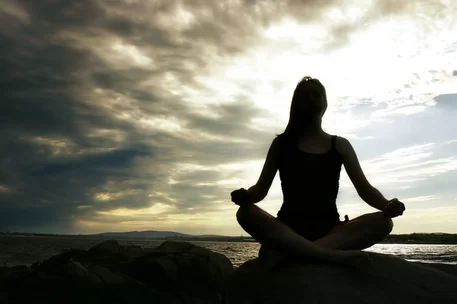
The fact that yoga has advantages is the finest news for someone who detests aerobics. To get cardiovascular benefits, you must, however, increase your heart rate. Additionally beneficial are:
Enhanced flexibility.
Increasing your sleep, exercising your mental and physical faculties, and other aspects of your lifestyle.
After the discussion about cardio and weights, it would seem unexpected that yoga would be on the list. After all, a big part of yoga is stretching.
Yoga, however, may reduce your risk of developing heart disease, according to a study. On rare occasions, it might have an immediate effect on cholesterol levels. a three-month yoga session allegedly helped decrease both total cholesterol and LDL cholesterol. Additionally, it raised diabetics’ HDL cholesterol levels. Each day, the participants worked out for roughly an hour.
In a comprehensive assessment of numerous studies, people who consistently practiced yoga outperformed those who did not exercise in terms of their LDL cholesterol, HDL cholesterol, and blood pressure.
There are Some Yoga Poses For Cholesterol Control:
Kapalbhati Pranayam:
This yoga exercise uses deep breathing to assist balance the body’s ability to rid itself of toxins and speed up the metabolic process, which helps people lose weight. Additionally, it stimulates the organs of the abdomen and enhances digestion.
Chakrasana/Urdhva Dhanurasana (Wheel Pose):
This posture eases constipation by massaging the internal organs in the abdomen. Additionally, it enhances the liver’s performance, which aids in the elimination of extra cholesterol and fat.
Shalabhasana(Locust pose):
This pose stimulates the digestive system while stretching the abdomen and strengthening the back, shoulders, and arms. Maintaining a healthy weight will help you lower cholesterol, enhance liver function, and eliminate excess body fat in the hips, waist, thighs, and abdomen.
Sarvangasana:
It is a yoga practice that demands you to balance your entire body on your shoulders in order to affect how each body component functions. This pose, often known as the “Queen of Asanas,” is very helpful in preserving both physical and emotional health.
Paschimottanasana(Seated forward bend):
This pose strengthens the liver and kidneys, lowers obesity and burns excess belly fat. This pose minimizes obesity, burns extra belly fat, and can be especially efficient at decreasing blood cholesterol levels.
Ardha Matsyendrasana(Seated spinal twist):
This posture not only strengthens the liver and relieves indigestion but also massages the abdominal organs and softens the spine. By assisting you in maintaining a healthy weight, reduce excess body fat in the hips, waist, thighs, and belly, and lower cholesterol.
Daily Activities:
To lower your cholesterol, you only need to get your heart rate up. You don’t even need to run a marathon or even a 5000. Before beginning an exercise program to decrease your cholesterol, especially if you’ve been sedentary, speak with your healthcare provider. Ensure you appreciate the exercise you chose to stick with it. It’s about starting something and keeping going.
Combine your workouts to lower your cholesterol!
Those who haven’t worked out in a while should start out carefully. Then, progressively pick up the tempo and intensity to get the most out of it. However, make an appointment with your primary care physician for a thorough health check-up before you start any fitness program.
To lower your cholesterol, think about combining the following workout types:
Aerobic activities:
Exercises that increase heart rate include jogging, rope jumping, biking, and swimming.
Strength-training routines:
Exercises like lunges, squats, and push-ups are examples of strength-training routines.
Flexibility exercises:
They should be performed prior to and following each workout because they are a crucial component of all effective exercise regimes.
maximizing the benefits of your strength training
If you exercise properly, weight training should have some beneficial effects on your cholesterol. The following eight ideas:
- begin slowly: Don’t push yourself if you’ve been away from the gym for a while. start to do slow exercises. Start with quick, 15 to 20-minute workouts at a low level and go up as you get more comfortable.
- When you’re ready, accelerate: Take things to the next level once you’ve got it down. Then you can increase your exercise. You should exert 75% to 85% of your maximum effort if you’re using resistance training to help manage high cholesterol.
- More weight isn’t usually the result of high exertion: Your cholesterol level will be affected more by performing more sets with more repetitions than by lifting bigger weights.
- in addition to cardio: One method for getting the greatest benefit from your gym for your cholesterol therapy is circuit training. In order to achieve this, you need to lift lighter weights, perform more repetitions, and keep rest periods to no longer than one minute.
- Combine it up: Avoid boredom by mixing up your routine. One workout, lift weights; the next, do resistance exercises like pushups, lunges, squats, and wall sits. However, keep both sessions intense. Alternately, you could begin with weightlifting equipment or free weights before moving on to stretch bands or body-resistance workouts like chin-ups.
- Make your heart pump faster: If you really enjoy going to the gym, consider using it for your cholesterol-lowering cardio exercises as well. If you exert yourself, the elliptical machines and stationary bikes at the gym will effectively work your heart and lungs.
- Warm-up and cool-down: Stretching should be done both before and after weight training. Maintaining both aerobic and weight-training routines requires flexibility.
- Exercise at home: Speaking of flexibility, if going to the gym is demotivating due to the weather, try resistance training in your living room.
Any workout will work as long as you do it frequently:
All of these exercises can lower your cholesterol and save you from developing cardiovascular disease. Depending on your lifestyle, joint health, and general health, you can decide which is ideal for you.
There are further choices available. You probably use roughly the same amount of energy dancing or playing tennis on a regular basis as someone who walks quickly or runs. The most important thing is to engage in weight training twice a week and at least 30 minutes of moderate-intensity exercise every day. Then, as you can, add more throughout the day. Wherever you are, get up and move around!
How to begin a cholesterol-lowering workout program?
Always consult their doctor before beginning an exercise program, especially if their high cholesterol puts them at greater immediate risk for heart disease or stroke.
Stop exercising right once if you suffer chest pain, breathlessness, wooziness, or light-headedness. There is some additional general starting point advice:
begin slowly:
Start with a short length of time and gradually increase it if you are just starting an exercise regimen. All the way, go low and slowly. Start with a 15-minute workout and increase it to at least 30 minutes per day. Getting in 200 minutes of activity per week is the ideal aim.
Keep hydrated:
Drink water whenever you feel thirsty, and keep in mind that you might need to consume considerably more water to stay hydrated in hot or humid weather. Lemons can also help decrease cholesterol levels in the blood. Each day, mixing the juice of two to three lemons in water can be enough to lower your low-density lipoprotein (commonly known as ‘bad’ cholesterol) and reduce your risk.
Stay comfortable:
Wear flat shoes or trainers with supportive laces.
Keep an eye on it:
Try to exercise at the same time every day so that it becomes a habit and make exercise a regular part of your healthy lifestyle.
Stay inspired:
Invite your loved ones to join you to help you stay motivated and healthy. This may also assist them in beginning or continuing their own path toward a healthy lifestyle.
One of the best things about exercise is that it need not always be the same. Change it up, keep it interesting, and be confident that your efforts to lower your cholesterol will eventually pay off.
How much physical activity is required to lower cholesterol?
The best aerobic exercise for lowering cholesterol is repeated and uses a variety of muscle groups. The American Heart Association suggests engaging in at least 30 minutes of exercise five to seven times each week. Starting slowly and building up gradually.
According to the World Health Organisation (WHO), people should exercise a specific amount each week to keep healthy. However, they draw attention to the fact that 1 in 4 persons worldwide do not engage in the recommended amounts of physical activity.
Adults should strive towards one of the following, per the WHO:
at least 150–300 minutes of aerobic activity at a moderate to vigorous intensity each week
at least 75–150 minutes of aerobic activity at a vigorous to moderate intensity each week,
or a comparable mix of both during the course of the week.
Monitor heart rate:
Reaching fitness or weight loss objectives might be aided by monitoring heart rate while exercising. When exercising, heart rate is a good indicator of how much effort is being expended.
When exercising, the AHA advises that people work up to 50 to 85% of their maximal heart rate.
They go on to say that a person can determine their maximum heart rate by taking 220 less their age to get a number in beats per minute (bpm).
A 30-year-old, for instance, would deduct 30 from 220 to arrive at a maximum heart rate of roughly 190 bpm.
Optimum cholesterol levels:
The amount of cholesterol is measured in milligrams per deciliter (mg/dl).
The ideal level of total cholesterol, according to the Centres for Disease Control and Prevention (CDC), is less than 200 mg/dl.
The ideal HDL cholesterol level is greater than or equal to 60 mg/dl, whereas the preferred LDL cholesterol level is less than 100 mg/dl.
A person’s doctor can assist them in comprehending the implications of the findings of a blood lipid test for their health.
A person’s doctor can assist them in creating a unique treatment plan if their cholesterol levels are outside of the healthy ranges. This strategy could suggest food adjustments as well as exercise. A doctor might also recommend additional treatments in specific circumstances.
FAQS
You can lower your cholesterol levels by exercising. Exercise can activate the enzymes that draw harmful cholesterol from circulation and transport it to the liver, where it can be metabolized and eliminated from the body. Low-density lipoprotein (LDL), or “bad,” cholesterol levels can be decreased by engaging in at least 150 minutes per week of moderate-intensity exercise, according to the American Heart Association (AHA). Exercise helps to increase HDL levels. Women who were physically active had HDL cholesterol levels that were noticeably greater than women who were sedentary.
Yoga, however, may reduce your risk of developing heart disease, according to a study. On rare occasions, it might have an immediate effect on cholesterol levels. According to studies, a three-month yoga session allegedly helped decrease both total cholesterol and LDL cholesterol. Additionally, it raised diabetics’ HDL cholesterol levels. Each day, the participants worked out for roughly an hour.
In a comprehensive assessment of numerous studies, people who consistently practiced yoga outperformed those who did not exercise in terms of their LDL cholesterol, HDL cholesterol, and blood pressure.
The best aerobic exercise for lowering cholesterol is repeated and uses a variety of muscle groups. The American Heart Association suggests engaging in at least 30 minutes of exercise five to seven times per week. Starting slowly and building up gradually. at least 150-300 minutes of aerobic activity at a moderate to vigorous intensity each week
at least 75- 150 minutes of aerobic activity at a vigorous to moderate intensity each week,
Walking raises “good” cholesterol while decreasing “bad” cholesterol. A brisk 30-minute walk three times per week will boost your “good” cholesterol (HDL) while decreasing your “bad” cholesterol (LDL). Even if you don’t lose weight, this quantity of activity has been demonstrated to enhance your cholesterol levels.
You may start decreasing your cholesterol naturally by making dietary modifications, increasing your physical activity, stopping smoking, dropping weight (if necessary), and communicating with your doctor, you’ll be well on your way to long-term cardiovascular health.
Kapalabhati – A powerful Pranayam method, Kapalabhati increases the metabolic rate of the body, lowering harmful cholesterol. It also stimulates the abdominal muscles and digestive tract. This yoga exercise uses deep breathing to assist balance the body’s ability to rid itself of toxins and speed up the metabolic process, which helps people lose weight.
In other trials, moderate exercise reduced LDL cholesterol by up to 10%. 4A few studies suggest that exercise may have a somewhat favorable or neutral effect on LDL. 1Regular exercise can boost HDL cholesterol levels by 3 to 6%.
There are the following yoga asanas for cholesterol control: Kapalbhati Pranayam, Chakrasana/Urdhva Dhanurasana (Wheel Pose), Shalabhasana(Locust pose), Sarvangasana, Paschimottanasana (Seated forward bend), Ardha Matsyendrasana(Seated spinal twist) and many other yoga poses can helps to reduce bad cholesterol and improve a good cholesterol.
Tai chi may have a beneficial impact on inflammation, associated lipids, and blood cholesterol. This indicates that practicing tai chi regularly may reduce your risk of developing heart disease. Tai chi is a set of gentle or fluid physical exercises and body stretches. Your body moves from one position to the next without stopping, paying attention, or even realizing that it is always in motion.



